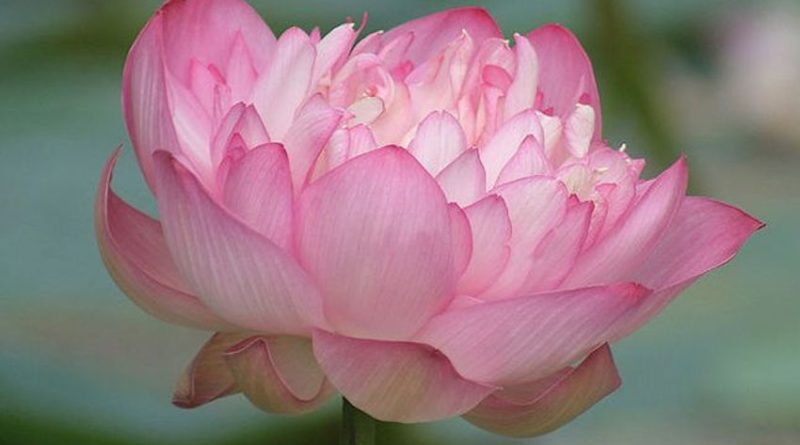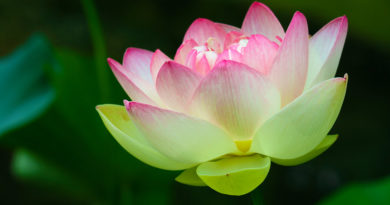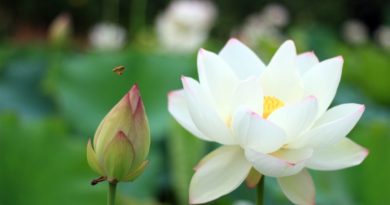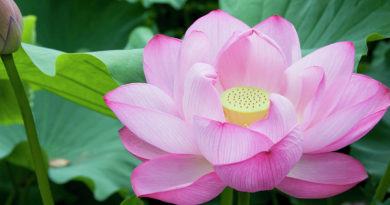DHAMMA PADETHA – 37. IF ELIMINATED, HAPPINESS WILL FOLLOW
DHAMMA PADETHA – IF ELIMINATED, HAPPINESS WILL FOLLOW
Although all beings living in this world wish to be free from suffering they keep encountering all kinds of suffering. The root causes are r±ga, dosa and moha. So long as these manifest themselves there will be suffering. If only r±ga, dosa and moha can be eliminated there will be true happiness. That is why Lord Buddha had discoursed on three kinds of dhamma for the elimination of r±ga, dosa and moha.
(1) To eliminate r±ga (lobha), asubha kammaµµh±na must be practised.
(2) To eliminate dosa, mett± kammaµµh±na must be practised
(3) To eliminate moha, insight meditation must be practised (Am 2/388)
(1) To eliminate r±ga, asubha kammaµµh±na must be practised means: If you think that your own body or khandha as well as other people’s bodies are pleasing (subha), you become attached, which is r±ga. Only if you can contemplate they are repulsive (asubha) you will be free from r±ga, attachment. That is what Lord Buddha had instructed to eliminate r±ga, attachment, by asubha kammaµµh±na (reflecting on the repellent nature of a corpse). There are two kinds of asubha: asubha of the dead person, and asubha of a living person. The dead person’s asubha is more obvious than the asubha of the living person. Asubha of a living person i.e. the repulsive nature is not so obvious because of clothing and cosmetics. It seems to be pleasing and loveable. On the contrary the nature of both has no difference.
You can see the repulsive nature of the corpse only once in a while. But the repulsive nature of the living person can always be seen. However, people do not realize the repellent nature of the living person. They think it to be loveable and pleasing. That is why they become attached to the person, which is r±ga. To be able to eliminate attachment (r±ga), beginning from your own body, you must perceive the repellent nature of other people’s bodies, which is asubha. If you can realize asubha within yourself, you will perceive the asubha of others’ bodies. That is why you must first and foremost try and realize asubha of yourself.
How r±ga is eliminated by Asubha
If you are mindful of all the things that come out of your body nothing is pleasing. You will find that they are unpleasant and have a repellent nature.
Excretion from the eyes, ears, nose are all repulsive. Spit and phlegm from your mouth, urine, stool all have bad smell. Sweat from ninety-nine thousand holes of the body are sticky and have bad smell. Everything that comes out of your body is unpleasing, having a repellent nature. That is why your own body, in reality, is asubha.
When you realize that your own body, in reality, is asubha, you discover that other bodies (aggregates) are, in reality, asubha. Those who have perceived that their own bodies as well as other people’s are asubha, they will be free from attachments (r±ga) from their own bodies and other people’s bodies. That is why Lord Buddha had said, attachment (r±ga) must be eradicated by asubha kammaµµh±na.’
Once, while Ashin ¾nand± was residing at Jetavana monastery at S±vatthi he went into S±vatthi town for alms-food followed by a young monk Ashin Vaªgisa. At the invitation of the King and ministers, Ashin ¾nand± went to their houses, where beautifully dressed maidens did the needful duties. Ashin Vangisa told Ashin ¾nand± that he had become attached to the maidens, which was r±ga. Ashin ¾nand± replied and urged the young monk to practise Asubha kammaµµh±na and eliminate attachment (r±ga).
Because of the attachment, (r±ga) for the females, Ashin Vaªgisa was about to be degenerated from the sasana and get into trouble. As instructed by Ashin ¾nand± he practised asubha kammaµµh±na, and because he could annihilate r±ga he stayed happily in the sasana till he became an arahant.
(2) To practise mett± kammaµµh±na to eliminate, dosa means: dosa and mett± are just the antithesis like water and fire. Dosa is like fire. An angry person burns himself and makes other people heated. When a certain person commits a crime due to dosa, other people also become angry immediately and are heated up. When there is fire in a town, it spreads from one house to another immediately. In the same way dosa spreads from one person to another and become heated. That is why dosa is compared to fire.
mett± is like water. One who has mett± is peaceful oneself and makes other people peaceful. When one speaks and does things with mett± for another person the other person also returns mett± and makes the first person happy by doing things for him. mett± is reciprocal which spreads from one person to another and is peaceful. That is why mett± is like water, cool and refreshing.
How Dosa is eliminated by mett±
The mett± that is developed and cultivated towards all those who come into contact with you, and all those living in the ten directions, by reflecting, ‘May they all be happy and healthy like myself’ , is known as mental (manokamma) mett±. When you instruct for other people to be happy verbally it is verbal (vacikamma) mett±. Doing or performing things for other people physically is physical (kayakanmma) mett±. In this way, while there is physical (Kayakamma) mett±, verbal (Vacikamma) mett±, mental (Manokamma) mett± in you, dosa has no chance to arise. Because you have eradicated dosa you will live peacefully. Those who can practise mett± kammaµµh±na till they achieve mett± jhana, will have their dosa eliminated and attain the highest happiness in the mundane world, which cannot be compared with any kind of happiness.
Because of the instigation of M±gandi, King Udena sent a poisoned arrow towards Samm±v±ti and five hundred attendants, which could kill all. Since Samm±v±ti and five hundred attendants were practising mett± kammaµµh±na, the arrow, instead of going forth, turned back towards King Udena. Hence King Udena bowed down and pleaded with Samm±v±ti. Thus because of extending mett±, Samm±v±ti and five hundred attendants escaped death and lived happily.
(3) To eliminate moha one must practise insight meditation. Moha and wisdom are directly opposite. Moha is likened to darkness and wisdom is compared to light. If there is no sunlight or moonlight, it becomes dark.
When the sunlight or moonlight appears, darkness disappears. In the same way where there is no wisdom light, there will be darkness of moha. When there appears wisdom light, the darkness of moha is eliminated. That is why Lord Buddha had instructed to practise insight meditation to annihilate moha.
Moha makes one, who is possessed with moha, bewildered. It makes one think wrongful things to be right, and rightful things to be wrong. It makes one do things that should not be done, and things that should be done is left undone. It makes one think that he possesses things that do not belong to him. It went wrong in every case and degeneration results. That is why moha is likened to darkness.
Wisdom makes one, who possesses wisdom, realize things in the true sense without having doubts. It makes one know whether something is beneficial or not. It makes one avoid things that are unbeneficial, and do things that are beneficial and therefore, one enjoys longevity, living a long life. It also makes one become an ariya, live happily with lots of benefit.
That is why wisdom is compared to light.
How moha is eliminated by wisdom
To enable one to eradicate moha one must practise satipatthana vipassan± meditation.
vipassan± is the wisdom that eliminates moha. When one practises mindfulness meditation one must choose a quiet place and sit cross-legged or folding the knees, a posture which one can sit for long.
If you wish to note breath-in and breath-out, you must keep your noting mind at the tip of your nostrils. As you breathe in, the air touches your’ nostrils and you must make a mental note, ‘breathing in’ and when you breathe out, the air touches your nostrils and you must note, ‘breathing out’. When your insight or vipassan± ñ±na develops you will realize that the air touching the nostril and your noting mind are two separate phenomena.
The air touching and the physical body that is sitting are r³pa which does not know anything. The conscious mind that is aware of the breath coming in and going out is n±ma. You shall discern those two phenomena. In this khandh± (aggregates), there is r³pa, which does not know anything and n±ma, the conscious mind that knows. Thus, you gain vipassan± insight which distinguishes between n±ma and r³pa. There is nothing but mind and matter. You discover that there is no such thing as atta or self in reality. Thus, the wrong view atta, mistakenly thought as self is eliminated. vipassan± insight paññ±”, has annihilated moha.
As you keep on practising, vipassan± insight develops, step by step, and while noting the breath-in and breath-out, touching the nostrils, you will realize that they pass away one after another. The noting mind also disappears. Then you perceive that touching is impermanent (anicca), the noting mind is also impermanent (anicca). The disappearance is so rapid that it seems to oppress you, that is dukkha. You cannot, by any means, prevent the rapid disappearance. It happens of its own accord. It is uncontrollable, therefore, it is anatta. Hence, you achieve vipassan± ñ±na.
Before practising mindfulness meditation you had thought wrongfully that your body is permanent (nicca), happiness (sukha) and self/ego (atta), all are eradicated by vipassan± meditation. vipassan± insight has annihilated moha.
According to the method of Venerable Mahasi Sayadaw, sit in a quiet place and when you inhale, the abdomen rises and you must note attentively from the beginning of rising, step by step, the sensation of the stomach becoming tense and label mentally ‘rising’; when you exhale the abdomen falls gradually, you must note by being aware of the movement from beginning to end attentively and precisely and label mentally ‘falling’ When vipassan± ñ±na deepens you realize that rising and falling, and the noting mind are two separate phenomena.
Rising, falling and the body sitting, that does not know anything, are r³pa. You realize that the noting mind is n±ma. In your body, there is r³pa that does not know anything and n±ma which is the conscious mind. There are but these two, n±ma and r³pa, which you can discern. This is vipassan± insight. You realize truthfully that there is no such thing as ego, self or atta body. The wrongful thought that r³pa and n±ma are self, ego or atta body is annihilated. This annihilation is annihilating moha by vipassan± panna.
As you continue practising, vipassan± ñ±na becomes stronger and as you note rising, falling you discover that the rising and falling sensations disappear one after another. The phenomena of rising and falling are impermanent or transient, (anicca), the noting mind is also impermanent (anicca). The disappearances are so rapid that they seem to oppress you, (dukkha), you cannot by any means control or prevent the disappearances or the passing away of the phenomena, they occur of their own accord. Hence there is no self, i.e. anatta. This realization is vipassan± ñ±na.
The wrong view held before practising mindfulness meditation, that your body is nicca, sukha, atta are all eradicated. This is eliminating moha by vipassan± ñ±na.
By practising vipassan± meditation, you will be fully endowed with anicca, dukkha, anatta ñ±na. r±ga, dosa, moha will be eliminated by magga ñ±na and according to your perfection or parami you will become Sotapanna, Sakadagami, Anagami, Arahanta and attain Nibbana.








